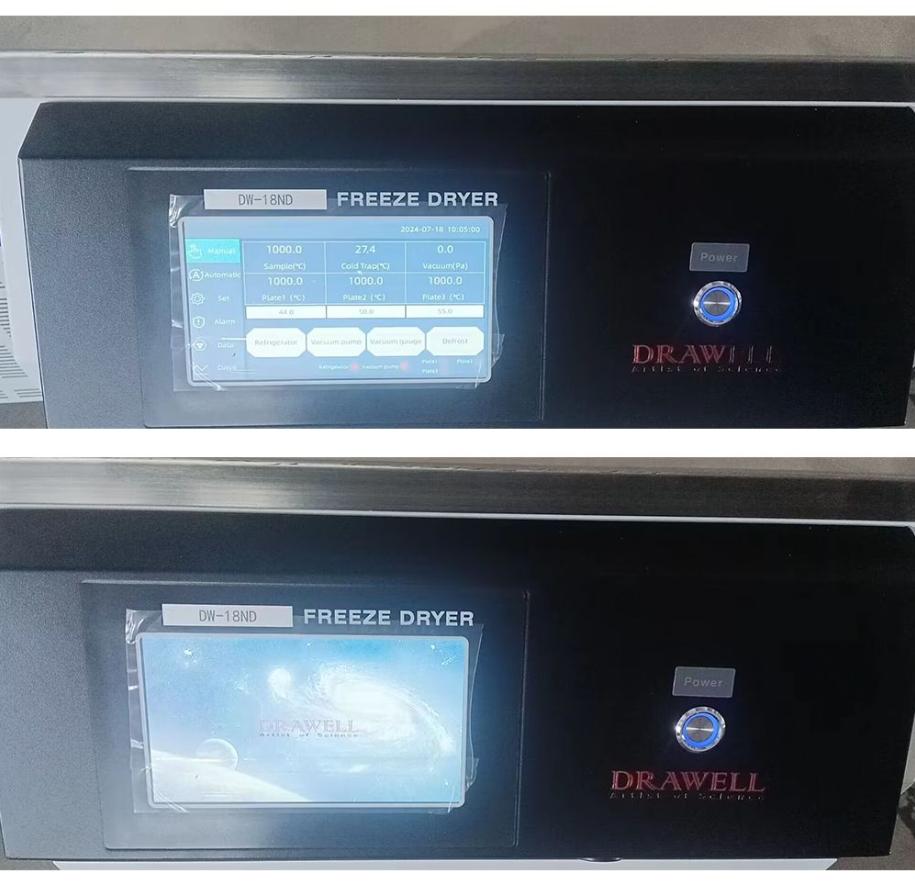Vacuum freeze dryers are essential tools in laboratories, commonly used for sample preservation by removing moisture through sublimation. However, like any complex piece of equipment, they can encounter issues that can affect their performance. Proper maintenance and troubleshooting are crucial to ensure optimal operation and prevent costly downtime. Here we delve into 4 common problems encountered in lab vacuum freeze dryers, along with practical troubleshooting tips to help you address and resolve them effectively.

Problem 1: Vacuum System Issues
The vacuum system is one of the most critical components of a freeze dryer, responsible for creating a low-pressure environment to facilitate sublimation. Any malfunction in the vacuum system can hinder the drying process, leading to incomplete or extended freeze-drying times, resulting in poor sample quality. Here are some common causes:
Leaks in the Vacuum Chamber: A leaky chamber allows air to enter, disrupting the vacuum and compromising drying efficiency.
Faulty Vacuum Pump: If the pump is not functioning optimally, the system may not reach the required vacuum levels.
Dirty or Contaminated Pump Oil: Over time, vacuum pump oil can become contaminated with particles or moisture, reducing the pump’s effectiveness.
Troubleshooting Tips:
- Inspect for Leaks: Check all seals and gaskets in the vacuum chamber for wear or damage. Replace any defective parts to restore the vacuum integrity.
- Monitor Vacuum Levels: Regularly check the vacuum gauge to ensure the system is achieving the required pressure. If not, inspect the pump and associated components.
- Replace Pump Oil: Change the vacuum pump oil at recommended intervals, or sooner if the oil appears dirty or contaminated. Regular oil changes prevent pump degradation and ensure smooth operation.
- Check for Clogs: If the vacuum system is slow to build pressure, check for blockages in the system lines or valves that may restrict airflow.

Problem 2: Refrigeration System Problems
The refrigeration system in a vacuum freeze dryer is responsible for cooling the condenser and maintaining low temperatures during the sublimation process. A malfunction in this system can cause inefficient drying or damage to temperature-sensitive samples. Some common causes are:
Refrigerant Leaks: If the system loses refrigerant, it may struggle to maintain the necessary low temperatures.
Compressor Failure: A faulty compressor can lead to inadequate cooling, preventing the system from reaching target temperatures.
Icing in the Condenser: Excessive ice buildup can reduce the condenser’s ability to trap water vapor, affecting the drying efficiency.
Troubleshooting Tips:
- Check Refrigerant Levels: If the system is not cooling properly, inspect refrigerant levels and check for leaks. Refill or repair as needed.
- Test the Compressor: Listen for unusual noises or check for overheating in the compressor. If the compressor is faulty, it may need to be replaced or repaired by a technician.
- Defrost the Condenser: Regularly defrost the condenser to prevent excessive ice buildup. If ice accumulates too quickly, consider adjusting the system’s humidity control or lowering the sample load.

Problem 3: Circulatory System Issues
The circulatory system in a freeze dryer regulates the flow of cooling fluids and vapor throughout the machine, helping to transfer heat and maintain temperature stability. When the circulatory system is compromised, the machine may overheat or fail to maintain proper temperature control. Some causes are:
Clogged Lines or Filters: Obstructions in the coolant lines or clogged filters can reduce fluid flow, causing the system to overheat.
Pump Failures: The pump that circulates the cooling fluid can fail or lose efficiency, reducing cooling capacity.
Low Coolant Levels: Insufficient coolant can cause the system to overheat, leading to inefficient drying or equipment damage.
Troubleshooting Tips:
- Inspect for Blockages: Regularly check coolant lines and filters for blockages. Clean or replace clogged filters as necessary to ensure smooth fluid circulation.
- Monitor Coolant Levels: Ensure the cooling fluid reservoir is adequately filled, and top it up as required to maintain proper flow.
- Check Circulatory Pump: Listen for unusual noises from the pump or inspect for overheating. If the pump shows signs of wear or damage, it may need to be repaired or replaced.

Problem 4: Electrical Control System Problems
The electrical control system of a vacuum freeze dryer manages the operation of various components, including temperature controls, vacuum levels, and timers. Malfunctions in the electrical system can result in complete operational failure or erratic system behavior. Here are the common causes:
Wiring Issues: Faulty wiring or loose connections can cause intermittent operation or complete system failure.
Control Board Malfunction: The control board that regulates the dryer’s settings can fail, leading to incorrect temperature readings or improper vacuum levels.
Sensor Failures: If temperature or pressure sensors are malfunctioning, the system may not maintain the correct operational parameters.
Troubleshooting Tips:
- Inspect Electrical Connections: Check all wiring and connections for signs of wear, fraying, or disconnections. Tighten loose connections and replace damaged wires.
- Test the Control Board: If the system behaves erratically or fails to respond to settings, the control board may be faulty. A technician should inspect and, if necessary, replace the board.
- Calibrate or Replace Sensors: If temperature or vacuum levels are inconsistent, test the sensors for accuracy. Replace malfunctioning sensors to ensure precise control over the freeze-drying process.
The electrical control system is the brain of a vacuum freeze dryer, regulating its overall operation. Ensuring proper electrical connections, maintaining sensors, and addressing control board issues promptly can prevent operational disruptions.
Maintaining optimal performance in a lab vacuum freeze dryer requires regular inspection, maintenance, and troubleshooting of key components. By addressing vacuum system issues, ensuring the refrigeration and circulatory systems function correctly, and keeping the electrical control system in good working order, you can prevent common problems that impact the freeze-drying process. With careful monitoring and timely interventions, you can extend the lifespan of your vacuum freeze dryer and ensure that it continues to perform effectively for your laboratory needs.








